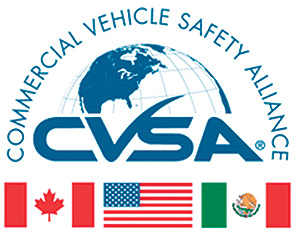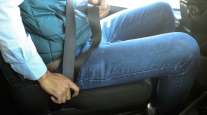Senior Reporter
CVSA Inspectors Place More Than 1,600 CMVs Out of Service for Brake Violations

[Stay on top of transportation news: Get TTNews in your inbox.]
Commercial Vehicle Safety Alliance inspectors removed more than 1,600 commercial vehicles from roadways in the U.S. and Canada for critical brake-related violations during an unannounced enforcement effort May 15, CVSA said Aug. 7.
During the trade organization’s Brake Safety Inspection Initiative, inspectors conducted more than 10,358 CMV inspections that focused on identifying brake system violations. Of those inspections, more than 16% of vehicles were placed out of service until the violations could be corrected.
In total, the U.S. conducted 8,738 commercial motor vehicle inspections, while Canada conducted 1,620 inspections. The out-of-service rates were 16.6% in the U.S. and 13.5% in Canada. Across both countries, the overall out-of-service rate was 16.1% or 1,667 CMVs.
On May 15, CVSA's law enforcement members conducted 10,358 CMV inspections focused on identifying brake system violations. 16.1% (1,667) had critical brake-related violations and were placed out of service until those violations could be corrected. https://t.co/v66q1B7EWP pic.twitter.com/b4urwNEGLa — CVSA (@CVSA) August 7, 2019
The Federal Motor Carrier Safety Administration said that in 2017 there were more than 500,000 brake-related violations on U.S. roadways.

Top 5 Brake-Related Violations
According to FMCSA’s Analysis and Information Online 2019 calendar year data snapshot as of June 28, out of 1.8 million inspections, the top five brake-related violations were:
• Clamp or roto type brake out of adjustment (86,296)
• CMV manufactured after Oct. 19, 1994, has an automatic brake adjustment system that fails to compensate for wear (45,594)
• Brake hose or tubing chafing and/or kinking (37,737)
• No or defective ABS malfunction indicator lamp for trailer manufactured after March 1, 1998 (37,343)
• Inoperative or defective brakes (32,125)
The unannounced inspection blitz was intended to identify and remove commercial motor vehicles with dangerous brake issues from roadways to reduce the number of crashes caused by or made more severe by deficient braking system performance.
CVSA inspectors paid close attention to violations involving brake hoses and tubing, citing 996 units with chafed rubber hose violations and 185 units with chafed thermoplastic hose violations. In addition, inspectors cited 1,125 Canadian equivalent violations for chafed rubber hoses and 124 Canadian equivalent violations for kinked thermoplastic hoses.
“Brake hoses and tubing must be properly attached, undamaged, without leaks and appropriately flexible,” said CVSA President Chief Jay Thompson, from the Arkansas Highway Police. “Because they are such an important part of the braking system, the failure of hoses or tubing can cause problems for the entire braking system.”
CVSA said 55 jurisdictions in the U.S. and Canada participated in this focused one-day brake safety inspection and enforcement initiative — 45 U.S. states and territories and 10 Canadian provinces and territories.
CVSA said its inspectors are holding another brake safety enforcement event this year, Brake Safety Week, which is scheduled for Sept. 15-21, at participating jurisdictions throughout North America.
Brake Safety Day and Brake Safety Week are inspection events that are part of the Operation Airbrake program sponsored by CVSA in partnership with FMCSA and the Canadian Council of Motor Transport Administrators.




